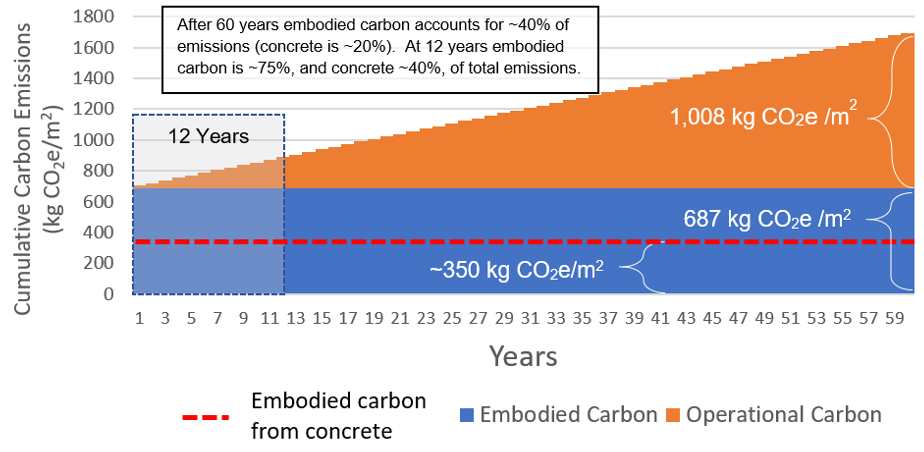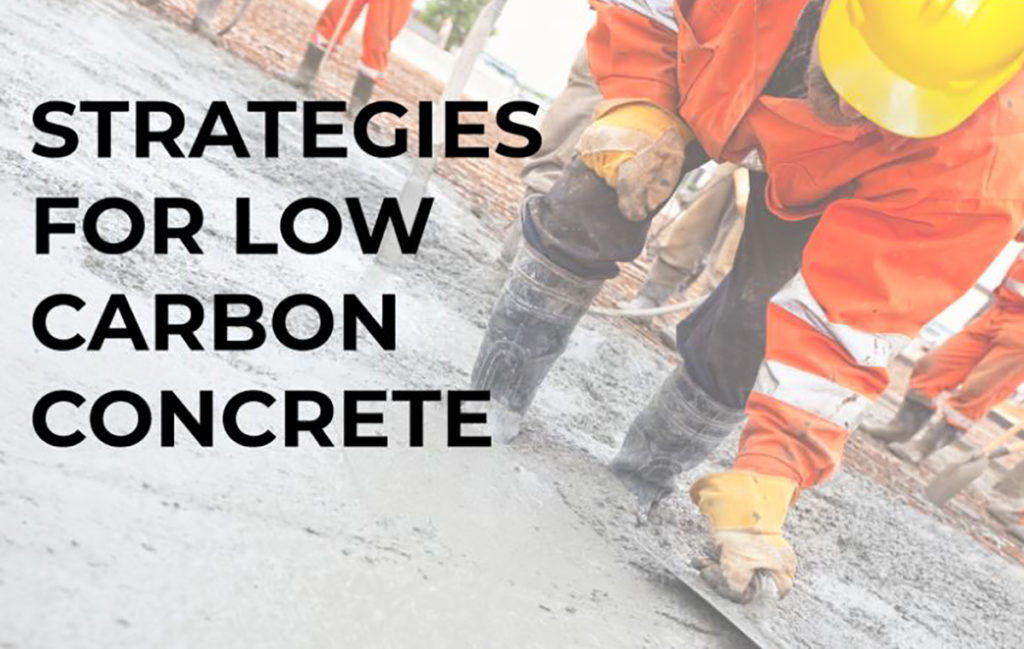Concrete is the second most widely used material in the world, second only to drinking water. The concrete industry is responsible for 8% of global emissions, more than any country other than the USA and China. Luckily there are many easy-to-implement strategies to lower the carbon footprint of this important product with minimal to no impact on budget and schedule.
Mantle Developments is proud to have authored a primer on low carbon concrete for federal procurement agents. It’s available for download in both French and English, here.
Concrete, why does it matter?
Concrete is everywhere, it’s used to construct our buildings, roads, and other critical infrastructures like bridges and dams. It’s so ubiquitous that we often don’t realize that concrete is the second most widely used material in the world, second only to drinking water. The concrete industry is responsible for 8% of global emissions, more than any country other than the USA and China. Luckily there are many easy-to-implement strategies to lower the carbon footprint of this important product with minimal to no impact on budget and schedule.
Concrete’s impact on a building’s total emissions has historically been overlooked yet has never been more relevant than it is today. In the past, buildings were far less energy-efficient and energy systems were more carbon-intensive. Historically, the operational carbon emissions (generated through energy consumption) outweighed the embodied emissions (generated by building materials, including concrete.)
Recently, there has been an ongoing shift to decarbonize energy sources and promote energy efficiency decreasing operational carbon emissions. This has led to a greater focus on reducing embodied emissions associated with construction materials and processes as a key lever toward decarbonization of the built environment.
To illustrate, a life cycle analysis (LCA) was conducted on an Ontario-based reinforced-concrete LEED-certified institutional building. Over a 60-year window, the upfront embodied emissions produced when the concrete was made accounted for 20% of the building’s total life cycle emissions. When a shorter 12-year window is considered, concrete represents as much as 40% of a building’s total emissions.

Figure 1: Life cycle carbon footprint for a LEED-certified government building in Ontario, completed in 2013
A significant contributing factor to the concrete and cement industry’s environmental footprint is that it is a staple for construction processes. Though new materials and concrete alternatives are gaining traction (like mass timber), construction will continue to rely heavily on concrete for the foreseeable future. As such, there is increasing urgency to decarbonize existing cement and concrete processes to align with the growing demands for low-carbon building materials.
What is Canada doing about it?
To address concrete’s embodied emissions, the National Research Council (NRC), Canada’s largest federal research and development organization, retained Mantle Developments (Mantle) to author a Low Carbon Concrete Primer for use by federal procurement officials.
This research was conducted as part of the NRC’s Low-carbon assets through life cycle assessment (LCA2) Program and is a delivery under the joint commitment pledged by the Canadian Government and the Canadian Cement Industry. Through the Greening Government Strategy, the government of Canada has committed to:
- disclose embodied carbon in structural materials of major projects by 2022,
- reduce embodied carbon in structural materials by 30%, starting in 2025
- and conduct whole building (or asset) life-cycle assessments by 2025 for major buildings and infrastructure projects.
Key Opportunities
There are many opportunities to reduce the carbon footprint of concrete that can be taken by design professionals. Many of the strategies have no impact on performance, cost, or construction schedules and some even create the potential to reduce the total cost of the project by using less material. Some of the key opportunities include:
1. Material efficiency. Ask designers to prioritize a materially efficient design (right-size / avoid over-engineering).
In general, less materials means less carbon. This can include reducing or even eliminating underground construction including parking.
2. Maximize the use of supplementary cementing materials (SCMs).
Maximize the use of alternative cementitious materials or blended cements. SCMs reduces clinker content of the concrete binder by incorporating industrial by-products such as blast furnace slag, silica fume, ground glass, natural pozzolans and fly ash or use of alternative cementing materials such as calcined clay. Less clinker means lower carbon. It’s common for projects to use 5-10% SCMs, but this can be increased significantly with some mixes having 40%+ SCMs. Each 10% increase in SCMs results in a ~7% reduction in embodied carbon.
3. Use Portland-limestone cement
Normal cement is called Portland cement (also called “general use” or GU). The cement industry has developed a lower-carbon version called Portland-limestone cement (also called “general use-limestone” or GUL) which mixes in crushed limestone. This product is widely available and has been approved by Canadian regulators and standards associations. It is cost and performance neutral while reducing the carbon footprint of the mix by ~10%.
4. Allow for longer curing times where early strength isn’t required
Some parts of your building need early strength, like suspended slabs and structural beams. However, those represent a minority of your concrete. Other elements, like footings, foundations, columns, slab-on-grade, walls, and roofs, don’t see maximum loads for many months (or years) after construction. For these elements, ask your structural engineer and concrete supplier to move from the standard “28-day strength” requirement, and allow for longer curing times of 56-day or 91-day. Extending the curing time means less cement and therefore lower carbon and in some cases lower cost too!
5. Consider performance-based design requirements.
Some specifications are prescriptive, meaning they specify a minimum amount of cement required and/or a maximum allowable amount of SCMs, for example. In some cases, this may lead to excess cement use. Instead, use performance-based requirements specifying strength and durability, while noting that low-carbon options are preferred. This allows designers the flexibility to vary the concrete mix ingredients in the most carbon-efficient manner possible while achieving the desired performance.
For more opportunities, refer to the full report, available for download in both French and English, here.
Mantle Developments can help reduce the environmental impact of your building materials
Contact us for help understanding opportunities to track and reduce the embodied carbon of your concrete and other construction materials. We can help guide an LCA and embodied carbon assessment, help you find readily available low-carbon materials, connect you with great local technologies, and help develop strategies supporting low-carbon and net-zero developments.

